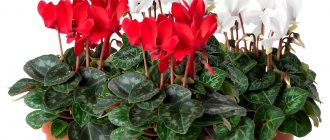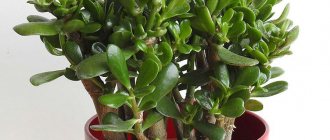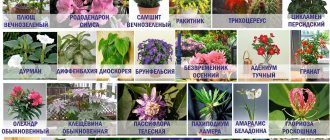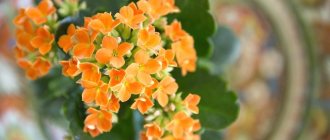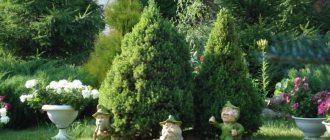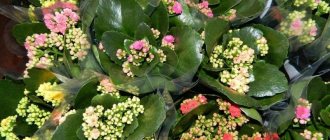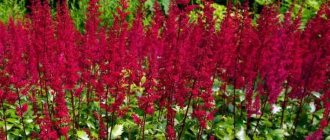Today we invite you to read about beautiful indoor flowers, look at photos and find out the names of green “pets”. Some of them are easy to care for, and some are capricious, useful or poisonous. In any case, it’s up to you to decide what flower to decorate your house with; we will only give general recommendations and present a list of “Very beautiful indoor flowers in the world.” It’s definitely worth purchasing such beauty for yourself, because plants purify the air, decorate the room, and fill it with positive energy.
Regardless of the choice of flower, do not rush to go to the flower shop, first learn thoroughly how to care for it. Often sellers do not warn about the consequences of improper replanting, watering and lighting. Our rating includes mainly unpretentious flowers.
Schlumbergera x buckleyi / Christmas cactus - indoor plants that bloom in winter
Schlumbergera x buckleyi / Christmas cactus
Bloom. This lush flower is also called the Decembrist, because it blooms mainly in the first month of winter. The flowers are located at the ends of the stems and can be of any color - red, hot pink, white, orange, light purple.
Care. Beautiful indoor flowers Schlumbergera x buckleyi are unpretentious, the only condition is bright light and the absence of drafts. Under natural conditions it grows on tree branches, so it does not suffer from infrequent watering.
Homeland. They were first discovered in southeastern Brazil more than 200 years ago.
Poinsettia / Christmas Star / Poinsettia
Poinsettia / Christmas Star / Poinsettia
Bloom. The second name is the most beautiful spurge. Beautiful indoor flowers in pots bloom only in winter, which is why they deserve the name “Christmas Star”. Flowering lasts from 2 to 6 weeks, depending on care.
Indoor plants with beautiful flowers The Christmas star is a wonderful gift for the New Year or Christmas. Breeders have developed several more colors: snow-white, variegated, burgundy-violet, pink.
Care. You should place the poinsettia in a place with diffused light and make sure that the temperature does not fall below 16. That is, provide a fairly cool climate, but avoid drafts. The beauty does not tolerate spraying, although it needs moist air.
Homeland. Lives in tropical Mexico and Central America.
Winter plants for open balconies and terraces
It is unlikely that it will be possible to set up a winter garden on an open balcony if it is located in a cold climate zone. The maximum that can be done is to decorate it with spruce compositions.
But on closed, glazed loggias there are much more opportunities. The snow doesn't cover them. Temperature may fluctuate. If the thermometer behind the glass drops to minus 10°, on the balcony it will be positive. When there is severe frost outside, down to 25 - 30°, on the insulated balcony the temperature will be down to minus 5°. There are plant species that do well in this temperature regime.
Winter plants for the balcony should be selected depending on your location, climatic conditions and living conditions.
- Citrus fruits can overwinter at temperatures of 7°.
- Cacti are very adaptable plants. Not only can they tolerate drought, but most species thrive at temperatures below 5 degrees, and some of them are not even afraid of frost.
- Plants such as laurel, pelargonium (geranium), fuchsia, hydrangea, chrysanthemums, boxwood are adapted for temperatures of 5-6°.
- Camellias can decorate your balcony in winter; they tolerate temperatures down to minus 5°. Ideal conditions for it are a balcony, where the temperature is from 0 to 15°.
- Coniferous plants: araucaria, thuja, cypress, cryptomeria. The keeping temperature for them in winter is 6-10°.
You can leave frost-resistant conifers and some deciduous shrubs on balconies and terraces, including white and common spruce, mountain pine, some varieties of juniper, evergreen boxwood, dwarf serviceberry and ornamental cotoneaster.
Plants should be stored in special frost-resistant pots or containers. In addition, the sides of the containers can be insulated with polystyrene foam, mineral wool or glass wool. Some bushes must additionally be completely covered with special agrofibre, which will protect them from frosty winds.
Heather and Erica
Heather is a low, unpretentious shrub that does not wither when cold weather sets in, and in cold weather it simply freezes, but does not change its decorative appearance. Common heather (Caluna vulgaris) and Erica (Erica carnea) are suitable for balconies. You can buy the plant in garden stores or at the market. From August to November, the heather is strewn with flowers, small flowers resemble bells, and terry flowers resembling roses are located on the inflorescence branches.
Erica and heather are very similar at first glance. Erica is also a frost-resistant shrub, but flowering occurs from January to April. For autumn flowering, from September to November, it is recommended to plant Erika gracilis. The optimal temperature is from 7 to 15°. During the flowering period 8°. Water Erica 2 times a week. The plant needs good lighting.
Related article: How to grow hellebore on the balcony
Juniper
Junipers, one of the few coniferous plants, tolerate wintering well in containers - with the earthen clod completely freezing. Juniper is not picky about the composition of the soil, but it is still better to add peat and sand. Very often, a dwarf tree or bonsai is formed from the plant. To enhance the effect, they are sometimes planted on stones.
cotoneaster
You can’t take your eyes off the evergreen and always beautiful creeping cotoneaster in the fall, especially after frosty nights. Red fruit beads are scattered against the background of green leaves edged with white. For this plant, experts recommend not only protecting the roots in a suitable pot, but also the whole plant with a special cap. If you don't have one, you can use straw or thick paper.
Dwarf coniferous plants are frequent guests on balconies. By planting plants such as araucaria, cypress, yew, thuja, you can enjoy the healing tart smell without going into the forest. Such plants can easily tolerate temperatures on the balcony down to minus five degrees.
Sinningia speciosa / Beautiful Sinningia
Sinningia speciosa / Beautiful Sinningia
Bloom. Gardeners call it gloxinia, but at home the flower still has another name - Sinningia. It usually blooms on the windowsill in early spring. The plant has velvety leaves, pleasant to the touch, and bell-shaped flowers. The most common colors are violet, purple and bright red.
Care. Caring for Sinningia is simple; just do not lower the air temperature below 17 degrees, water it moderately with warm water, avoiding the surface of the leaves and flowers. Air humidity should be maintained, and spraying is prohibited.
Homeland. It is endemic to Brazil.
What attracts a flower? Heat-loving and of course huge bell-shaped flowers.
Thuja Smaragd
It is also called “emerald”. A characteristic feature of this variety (number 5) are leaves of a specific shape and texture that combine well with many other plants. Like many other perennial plants described above, Thuja Smaragd does not change its rich green color throughout the year, which is why it is of great interest to many gardeners.
“We are still friends”: Derevianko commented on the breakup with his wife
Lost weight: what Sofia Tarasova sacrificed for the sake of “VIA Gra” (new photos)
A student at the Vietnam Police Academy shared how she takes care of her facial skin.
Ixora / Ixora
Ixora / Ixora
Bloom. What a beautiful indoor flower? Ixora blooms very often, especially during the rainy season. This is a heat-loving flower, but can easily tolerate temperature drops of up to 15 degrees, the main thing is to avoid sudden changes.
Care. Loves good watering; if the soil dries out, it begins to shed its leaves. The best shape for a pot is rounded at the bottom; there must be large drainage holes at the bottom. Diseases also develop in partial shade, so you should look for a place with diffused light.
Homeland. It was first discovered in the tropical forests of Asia, but due to transportation difficulties it is a rare “guest” in flower shops in Europe.
What attracts attention? Large spherical inflorescences with many flowers and glossy leaves. But bright colors are not the main thing here; the flowers are incredibly fragrant and can brighten up everyday life or lift the mood for any holiday.
Pelargonium / Geranium
Pelargonium / Geranium
Bloom. The “fragrant” flower has been popular for decades, this is evidenced by the mention of many poets, for example Pasternak: geranium flowers reach for the white stars in the snowstorm by the window frame... Flowers appeared in the 17th century and are still loved today. They bloom their umbrella balls in the spring and can bloom until late autumn. There are many shades and types: with white, red, pink, burgundy flowers, with double petals, with and without circles on the leaves.
The healing properties of geranium are due to the presence of geraniol in the leaves and flowers, which kills most bacteria. And ease of care is another reason for our love. Even those people who have absolutely no time can grow useful indoor flowers on the windowsill.
Care. If you want to grow a flower on the windowsill, geranium will be a sure-fire option, because it is absolutely not demanding in care. Pelargonium can be grown both indoors and outdoors. These are the most beautiful unpretentious indoor flowers.
Homeland. African countries.
Sedum false
This variety is distinguished by bronze leaves that turn red in winter. The flowering period begins in late spring, when the shoots are covered with cherry buds. The bushes reach a height of only 15 centimeters, but they grow up to 30 cm in width. False sedum (number 10) will feel best in a container if placed in an open and well-lit place, but if this is not the case, then there is no problem will happen if the plant is in partial shade.
These perennial plants are best suited for growing outdoors in pots because they combine attractive appearance, ease of care and resistance to cold weather. So if you want to decorate your garden without putting in too much effort, then definitely consider them. It is unlikely that you will be able to find a perennial plant that would be better suited for this role.
Finally, I would like to note that plants give us positive emotions due to their beauty, and also take away all the negativity.
Found a violation? Report content
Guzmania / Guzmania
Guzmania / Guzmania
Bloom. In nature, guzmanias grow on tree branches, so they need good light and humidity conditions to bloom. During flowering, small inflorescences appear at the top of the stem, and the leaves around them turn red, purple or yellow. The process lasts up to six months.
Care. Place the flower near a window facing east or west. In spring and summer, you can water not only the ground, but also pour water into the outlet. Care is simple, the main thing is to maintain the plant after it withers. If not given proper care, Guzmania may never bloom again. The flower itself dies after flowering, forming new babies, which should be separated from the mother (with the roots) and planted in separate pots.
Homeland. This exotic plant came to us from America and eastern India.
What attracts a flower?
An unusual tropical flowering that looks like a tall glass with a rosette flower at the top. The foliage resembles that of a pineapple.
Decoratively blooming indoor flowers
This is a special, large group of plants that can surprise and delight with their appearance, sometimes even unusual; they have always been of interest to lovers of indoor plants.
Decorative floriculture is literally replete with a wide variety of species and hybrids of flowers, adapted through the efforts of breeders to live at home; many of them had to change the conditions inherent in their natural growing environment.
Grown for their beautiful flowers, they do an excellent job with their main task - these wonderful plants decorate homes and offices. They are divided according to life forms, which help determine the care of plants:
- annuals;
- shrubs;
- tree-like;
- ephemeroids;
- succulents;
- epiphytes, others.
Gardenia jasminoides is an evergreen, heat-loving, fragrant, compact shrub with shiny, dark green leaves and delightful, long-lasting flowers, white or cream.
gardenia jasminoides
But all this splendor is achieved thanks to appropriate care, which is not entirely easy at home:
- By creating increased humidity, the plant will have to be sprayed, but not wet the open flowers and buds. Summer temperature should not exceed 25ºС, winter temperature 18°С, otherwise rapid growth of green mass will be observed to the detriment of flowering.
- While providing the gardenia with sufficient lighting, it must be protected from direct rays of the sun, so the best place for it would be windows facing west or east, and the flower should be moved to a south window in winter.
- Those who decide to have gardenia in their homes should be determined to provide the flower with these and other conditions so that the exotic miracle grows, blooms and smells fragrant in their apartments.
Clerodendrum is a very interesting flower, having the shape of a compact bush, the top of which is strewn with spectacular flowers from spring to autumn. During the flowering period, clerodendrum needs regular care: regular and fertilizing watering, the soil in the pot should always be moist, but not wet.
Clerodendrum
At low humidity, the flower is sprayed with room water, to which 1-2 drops of liquid complex fertilizer can sometimes be added.
Pachistachis is a kind of fireworks flower; against the background of fleshy dark leaves, its amazing inflorescences resemble candles flying upward; it is often chosen as an unpretentious original plant that can decorate any room corner.
Pachistachis
Pachistachis prefers frequently ventilated, draft-free rooms with cool air, so it should not be placed near heating devices. Diffused light, moderate watering with settled water, periodic fertilizing, fresh air - all this will help pastachis bloom long and luxuriantly.
Vriesia is one of the most decoratively flowering representatives of the world of flora, a perennial herbaceous epiphyte (growing on or attached to other plants).
Vriesia
Leathery leaves with smooth edges form a rosette; spike-shaped bracts are formed on long peduncles, on which, in turn, small flowers bloom. They quickly fade, but the bracts themselves last a very long time, giving the plants an unusual and elegant appearance.
Aechmea fasciata / Striped Aechmea
Aechmea fasciata / Striped Aechmea
Bloom. We continue to look at beautiful indoor flowers blooming (photos and names). Echmea begins to transform at the age of two or three years and pleases its owners all spring.
Care. Does not like drafts, but respects coolness; in summer it is worth spraying more often and not placing in the sun. Periodically you need to pour a little water into the outlet. After flowering, like Guzmania, it dies, but for some time “offspring” appear.
Homeland. Aechmea's country of origin is South America.
What attracts a flower? With its unpretentiousness, chic large rosette during flowering. In addition, exotic absorbs formaldehyde from the air. Therefore, it becomes the favorite indoor plant of everyone without exception.
Aphelandra protruding (Zebra-plant)
Aphelandra protruding (Zebra-plant)
Bloom. A flower with striped leaves and bright yellow flowers - pyramids.
Care. This plant requires careful attention to itself. The first thing to do is place the Zebra on a well-lit windowsill. The second is to provide warm conditions of detention. And third, fertilize twice a month during flowering. When the flower is at rest, do not disturb it, reduce its watering, and make the air in the room cooler. This is such a capricious phytozebra, but this makes it no less desirable for gardeners.
Homeland. Tropics of North and South America.
Top 5 most popular constantly blooming indoor flowers
These flowers not only delight with beautiful blooms all year round, but in return do not require too much attention from their owners, and do not take away their strength and means of maintenance.
Hibiscus, growing in the form of a tree or shrub, is loved by gardeners for its not capricious character: as long as it is satisfied with the conditions of care, it is ready to throw out new flowers throughout the year to replace the faded ones.
hibiscus or Chinese rose
In order for this cycle to continue, it is necessary to do something without which the flower cannot be so beautiful:
- The plant needs to receive a sufficient amount of diffused light.
- It needs to be pruned every week, maintaining the flower's original shape and allowing the young shoots on which it forms flowers to grow.
- Water your hibiscus as needed, usually twice a week.
- In winter, it is better for the flower to create cool air in the room; an excellent temperature for it is 15-17 degrees.
Begonia is also famous for its unpretentiousness, but, of course, it loves to take care of itself, it can bloom all year without rest, and very profusely. There are no special requirements for the composition of the soil; it must be watered abundantly, but without stagnant water, in order to create a microclimate with high humidity, the begonia is placed in a tray on a layer of expanded clay, then enough water is poured so that the level does not reach the bottom of the flowerpot.
Begonia
Blooming begonias need a lot of bright light; in the summer, the windows are curtained so that the leaves do not get burned from direct sun.
Pelargonium (geranium) is the favorite flower of the older generation, which has not yet gone out of fashion. In addition to being beautiful, pelargoniums improve the health of indoor air due to the release of essential oils.
Pelargonium
The flower does not like shaded rooms; there it turns pale, loses its high decorative value, and the stems become elongated. In winter, it is useful for pelargonium to stay at lower temperatures, as it better lays buds for flowering; pruning and moderate watering are also needed.
Indoor roses seem to have been created for this purpose, so that residents of megalopolises who do not have their own plot of land can grow miniature rose gardens in their apartments. It is better to place flower pots on the east or west side of the house so that the leaves do not suffer from sunburn during the hot summer months.
Indoor roses
After purchasing the bushes, you need to carefully examine them to determine their condition, immediately replant them in purchased special soil and place them in a shaded corner for several days to adapt.
primrose
Primrose , compact bushes with large leaves and bright flowers of various colors with yellow centers, decorates the window sills of many houses. Plants with proper care have a long flowering period, are hardy, and drought-resistant. To create an extended flowering period, you need to promptly remove yellowed leaves and peduncles with faded flowers.
Kalanchoe / Kalanchoe
Kalanchoe / Kalanchoe
Bloom . So, what indoor flowers are useful at home? This is Kalanchoe, of which there are more than a hundred species. During flowering (from mid-winter to May) it produces umbrella inflorescences of a wide variety of colors. There are plants on sale with large and double flowers that can tolerate low light conditions. Among the varieties are Blossfelda and Kalandiva.
Since ancient times, it has been believed that indoor flowers, useful for the home, can suppress painful microorganisms, relieve inflammation, heal wounds, improve the condition of the patient, and are even used in cosmetology to prolong youth. At the same time, the flowers of the plant are very beautiful.
Care. Kalanchoe is not only beautiful, but also unpretentious indoor flowers. The main thing is to prevent the soil from drying out. Since Kalanchoe is a succulent, it can accumulate water in dense leaves and thereby retain moisture.
Homeland. It grows naturally on the coasts of Africa and South America.
Oxalis or Purple Leaf Shamrock
Oxalis or Purple Leaf Shamrock
Bloom. The plant is also called Oxalis or hare cabbage. Due to the shape of the leaf, they like to call it the lucky clover. They bloom with small white flowers that flaunt above an abundance of purple leaves. Flowering begins in May and continues until winter.
Care. Oxalis loves warm rooms and evenly moist soil, as well as diffused light. In order for the plant to be lush and beautiful, it needs to be properly cared for. In winter, the flower is removed to a cool place so that flowering does not stop in the future.
Homeland. Indoor flowers with beautiful leaves grow in South America and Africa.
What attracts a flower? The bright clover-like leaves of this flower will not leave anyone indifferent. So it’s not even the Oxalis flower that is its main trump card, but the leaves that look like butterflies. Any sophisticated young lady with taste will want to buy such a purple friend.
Indoor plants that bloom all year round
What amateur gardener doesn’t want to grow flowers that will delight him with blooming almost all year round? There are several dozen varieties that, without much effort on the part of the owner, will delight him with their flowering continuously; it is enough for them to provide a room where the plants feel comfortable and provide standard care: watering, fertilizing, timely replanting, if possible, taking them outside during warm periods months.
Abutilon - its abundant flowering begins in the spring and continues until early winter, when daylight hours are significantly reduced, then the plant begins to shed flowers and hibernate. If the flower is artificially illuminated and the watering regime is maintained, flowering will not stop.
Abutilone
Phalaenopsis is a member of the orchid family; it prefers to grow on windows facing east; it is afraid of the abundance of bright sunlight. It is better to water the flower once a week, in the morning, with small volumes of water, while making sure that the soil is thoroughly dry.
Phalaenopsis
Ruellia - with original dark green large leaves with a white stripe in the center and light veins extending from it, in the middle of which crimson flowers bloom. For year-round flowering, it needs watering only when the soil dries out; Ruellia does not like shading; it is better to place the flower on eastern windows.
Ruellia
Jasmine is not at all demanding; the plant will only need to be placed in a room with a lot of diffused light, watered generously with heated water every 5-6 days, and fertilized with preparations containing a high potassium content.
Jasmine
Orchids / Orchids
Orchids / Orchids
Bloom. Under natural conditions, the most beautiful blooming indoor flowers grow on trees or stones, wrapping their roots around them. The flowers look exotic and look like butterflies that have gathered in a flock on a branch. They usually bloom for 2-3 months a year, although more can be achieved.
Care. When caring for orchids, it is important to follow three basic rules: root moisture, partial shade, and light access to the roots. That is why it is better to plant a flower in a transparent pot. This makes it easier to monitor the condition of the roots. If they dry out or become tangled, it is worth replanting the plant in a larger container.
Homeland. The homeland of beautiful flowers is the moist forests of Asia, Australia and the Philippines.
What attracts a flower? The most beautiful flowers, the duration of flowering and the variety of species, of which there are about 1000. Among the most popular and beautiful are Phalaenopsis. Orchid lovers know exactly which indoor flower is the most beautiful, but we have a few more contenders for your heart...
Amaryllis / Amaryllis
Amaryllis / Amaryllis
Bloom. The inflorescence of this beautiful flower consists of 2-12 large lilies, and the leaves are arranged in two rows. Amaryllis is a bulbous plant. The garden name migrated to the indoor flower, but in “greenhouse” conditions it is increasingly called hippeastrum. The most beautiful indoor flowers can bloom in early spring or summer, after which they retire.
Care. If you want to buy beautiful blooming indoor Amaryllis flowers for your home, know that they are difficult to care for. In summer it may suffer from air conditioning, but in winter it generally goes into a dormant state and sheds its leaves. As the weather warms up, the pot is placed in a warmer place. Rotate it regularly around its axis, water it more often and humidify the air. The main thing is that Amaryllis comes back to life again.
Homeland. South Africa is home to this beautiful flower. So Amaryllis is endemic to the Cape Province of the Cape of Good Hope. Later it was brought to Australia, where hybrid varieties were bred.
Anthurium / Anthurium - beautiful indoor flowers that bloom all year round
Anthurium / Anthurium
Bloom. If Spathiphyllum is called female happiness, then Anthurium is called male happiness. Its bright red color immediately catches your eye. The most interesting thing is that the plant blooms all year round if you care for it properly.
Care. It loves humidity very much, but cannot tolerate it if the water remains in the tray, and the soil should not be allowed to dry out. It should be remembered that the flower attracts bees, wasps and flies with its smell; it is time to get bars on the windows. Also, the juice of the flower is poisonous and dangerous for animals and small children. When transplanting, try to be careful.
Homeland. The tropics and subtropics of Central and South America are the homeland of the plant.
Calla / Calla
Calla / Calla.
Bloom. These beautiful, blooming, indoor flowers look very delicate, exuding a pleasant sweetish, but not cloying aroma. The plant has large arrow-shaped leaves of rich color. Flower colors vary widely - yellow, purple, pink, white, burgundy.
Care. The plant loves moisture, sunlight and blooms only in the presence of sufficient heat. During flowering, it is better to feed Calla and water it well. It should be remembered that there are many hybrid flowers (multi-colored) and they are all short-growing compared to the white Ethiopian Calla.
Homeland. Grows naturally in South Africa.
What attracts a flower? Its unusual flower shape, large leaves and its versatility. The fact is that Calla can be successfully grown both at home, on the veranda, and in the garden. Do not delude yourself that everything is so simple, because this beauty has something to protect itself with, its milky juice is poisonous. Therefore, the flower is not recommended for families with children and animals.
Boxwood Green Mountain
If this shrub (in the photo it is indicated by the number 2) is grown in open ground, then it grows up to 150 cm in height and 90 cm in width. When propagated in containers, its size will be smaller, but its decorative properties will not deteriorate. The main thing is to place containers with shrubs in a place protected from cold northern winds. Experienced gardeners recommend periodically rotating the pot so that the boxwood receives the same amount of sunlight on all sides. Otherwise, the foliage and buds will develop unevenly. A special feature of the “Green Mountain” variety is that it retains its color even in winter.
A Brazilian travels 36 km by bike every day to take his loved one home.
If there is little snow, there will be no harvest: December 16 is Ivan the Silent Day
"Dad is offended." Agata Muceniece about her relationship with Priluchny after the divorce

